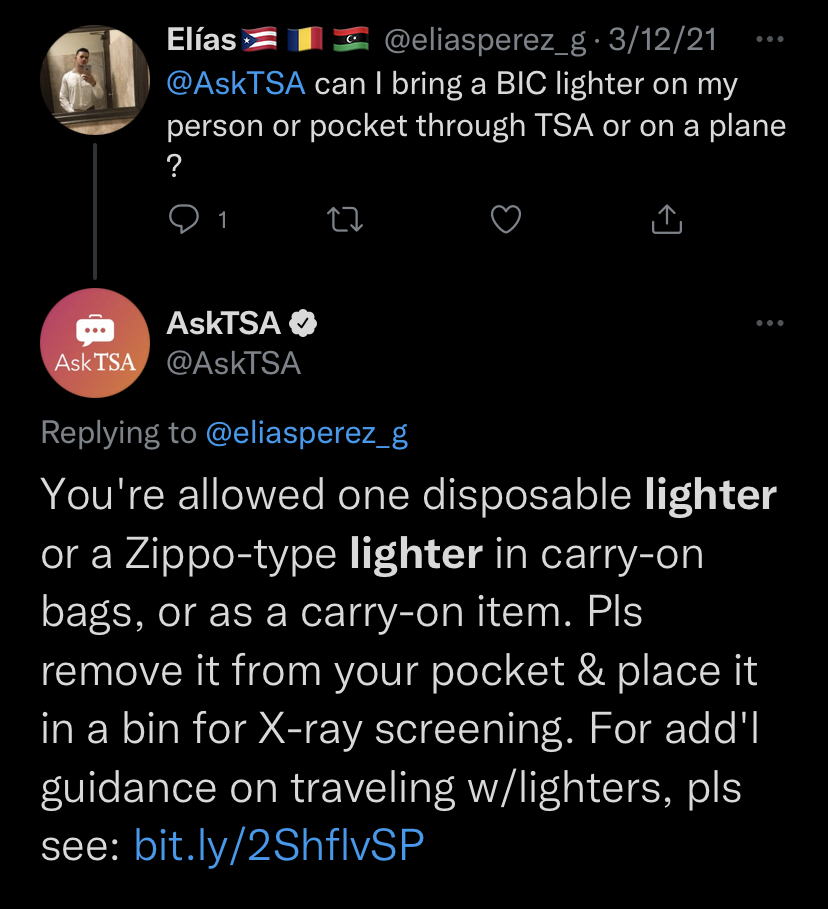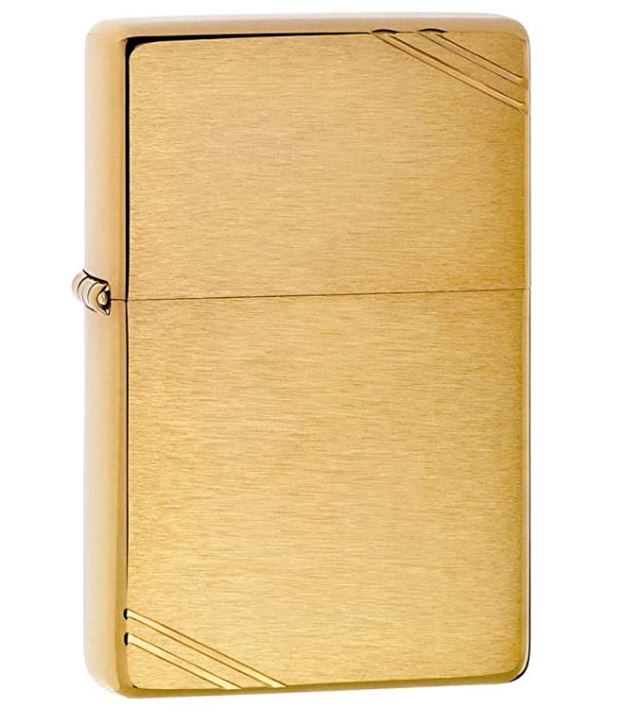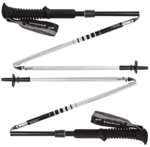Do you know what it takes to get a lighter through TSA’s security checkpoint? The answer to that question might surprise you. Today, we dig into the regulations that allow you to bring a lighter on your next flight.
Can I bring a lighter on my flight?
Yes, airline passengers are allowed to bring a lighter on plane as part of their carry-on and/or personal item allowance.
However, it should be noted that there are very specific rules & regulations that passengers must abide by in order to travel safely.
What rules do I need to follow when bringing a lighter on a plane?
In the United States, airplane passengers are allowed to bring 1 lighter in their carry-on bag or on their person per the FAA’s website. Here is the text of DOT regulation 49 CFR 175.10(a)(2) in its entirety:
One packet of safety matches or a lighter intended for use by an individual when carried on one’s person or in carry-on baggage only. Lighter fuel, lighter refills, and lighters containing unabsorbed liquid fuel (other than liquefied gas) are not permitted on one’s person or in carry-on or checked baggage. For lighters powered by lithium batteries (e.g., laser plasma lighters, tesla coil lighters, flux lighters, arc lighters and double arc lighters), each battery must be of a type which meets the requirements of each test in the UN Manual of Tests and Criteria, Part III, Subsection 38.3 (IBR, see §171.7 of this subchapter). The lighters must be equipped with a safety cap or similar means of protection to prevent unintentional activation of the heating element while on board the aircraft. Recharging of the devices and/or the batteries on board the aircraft is not permitted. Each battery must not exceed the following:
(i) For lithium metal batteries, a lithium content of 2 grams; or
(ii) For lithium ion batteries, a Watt-hour (Wh) rating of 100 Wh.
The above regulation specifies the safety measures, and the Transportation Security Administration (TSA) website confirms that passengers are allowed to bring a single lighter through their airport security checkpoints (so long as it is one of the approved types of lighters).
Which type of lighters can you bring on a plane?
Disposable butane lighters are what most people are familiar with when they think of lighters. These are small lighters with a tiny reservoir filled with butane lighter fluid. BIC & Clipper are examples of brands that people are most likely to be familiar with in this category.
Refillable Zippo-style lighters are also acceptable in your pocket or in your carry-on bag (just make sure not to bring any lighter fuel containers along with you).

It should be noted that completely empty lighters that are unfuelled are not regulated. You can bring multiple empty lighters on a plane, but I would expect some sort of delay when going through security to explain to the TSA agent screening your belongings.
Which types of lighters are you not allowed to fly with?
The TSA website specifically mentions that arc lighters, plasma lighters, and electronic lighters cannot be brought on an aircraft in your carry-on bag or your checked luggage.
Torch lighters, while once allowed in DOT-approved cases packed inside checked luggage, are now no longer allowed anywhere on a plane.
Additionally, any lighters that look like weapons (i.e. gun-shaped lighters) are automatically deemed unacceptable. Be aware that this judgment belongs to the TSA agent, so don’t make their decision harder than it needs to be by packing a questionable-looking lighter.
Final Thoughts
Flying passengers are allowed to bring a single soft-flame lighter in their pocket or in their carry-on bag, and lighters should not be packed in your checked luggage unless they are empty or enclosed in a DOT-approved special permit case. No e-lighters or torches are allowed on aircraft at all per the FAA’s guidance.
Keep in mind that these are simply the rules as they stand today, and TSA or DOT regulations are subject to change. While we expect that all security agents are aware of the current regulations, it always helps to be informed prior to your next flight.




Pingback: Can you bring matches on a flight?